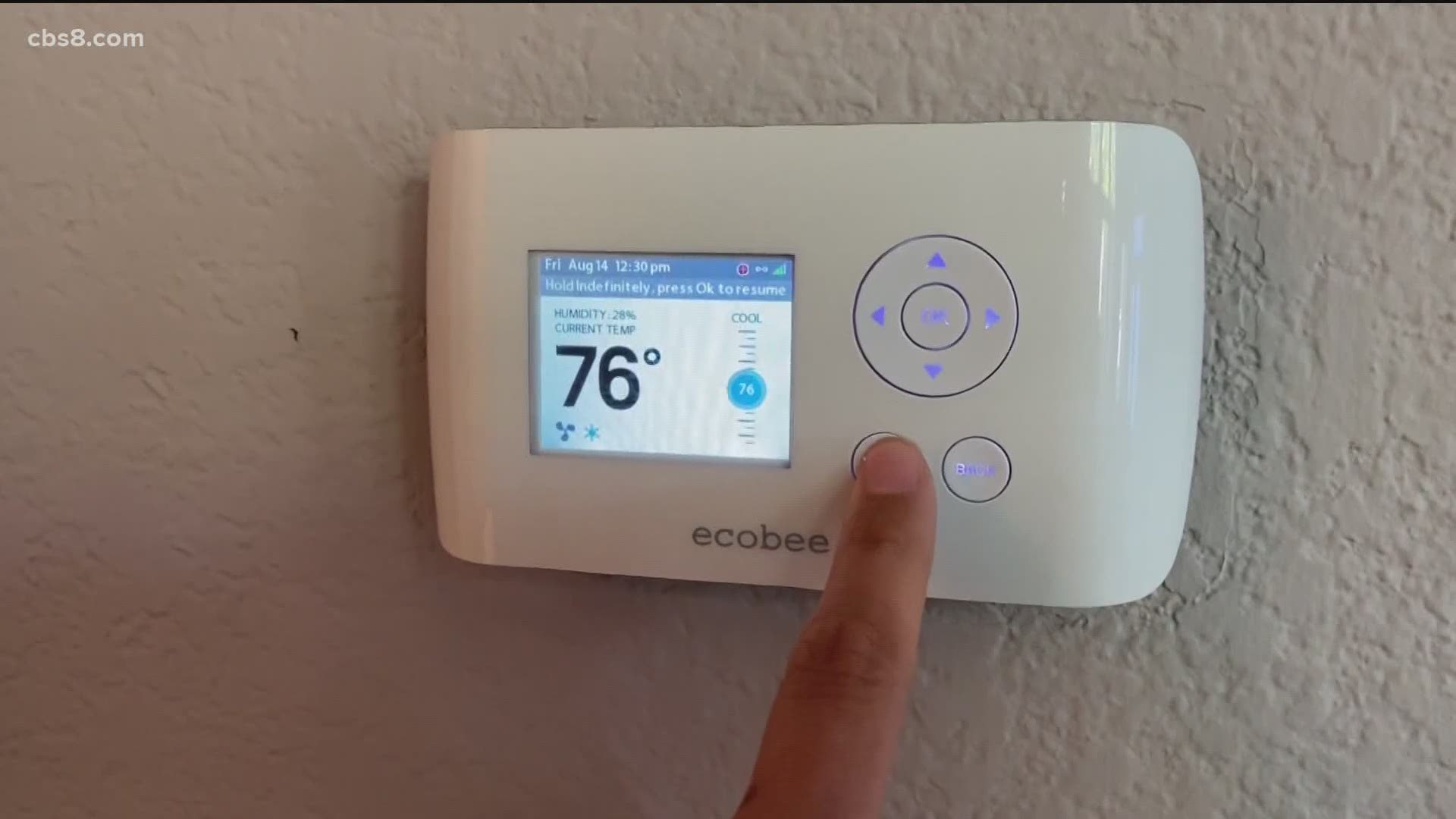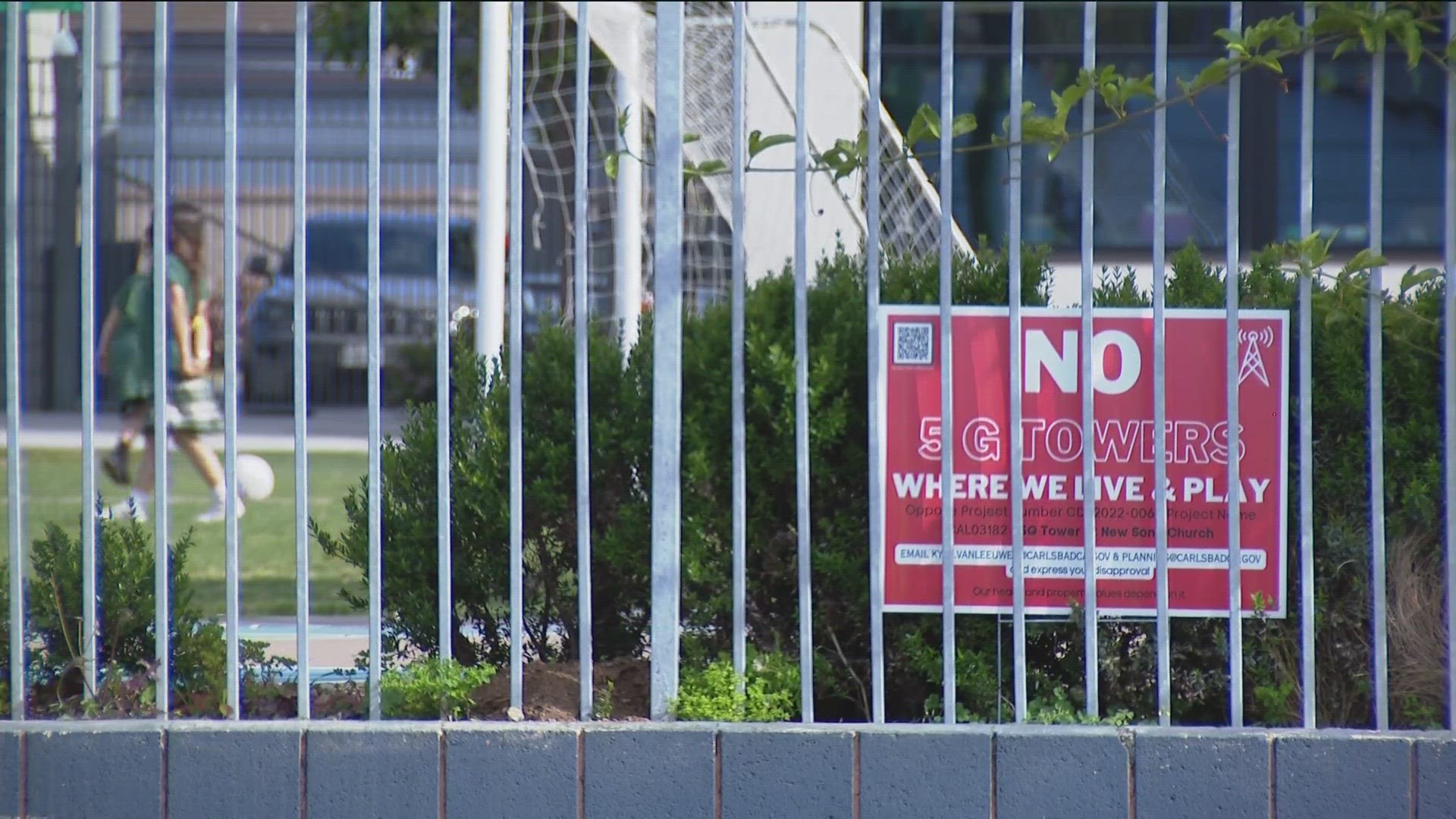SAN DIEGO COUNTY, Calif. — Monday 9 p.m. update
California's Flex Alert for Labor Day weekend ended Monday night without any rotating outages seen in San Diego or across the state.
Monday 6:20 p.m. update
CAL-ISO provided an update halfway through Monday's Flex Alert saying that the agency did not foresee any power outages and demand was looking manageable.
Monday 9:25 a.m. update
San Diego avoided rotating outages over the weekend but there is still one more day left of the flex alert.
Sunday 8:35 p.m. update
SDG&E thanked customers Sunday night and said for the second night in a row rotating outages were avoided due to conservation efforts. Crews continued to work to restore power throughout San Diego that was down for other reasons.
Sunday 8 p.m. update
According to SDG&E's outage map approximately 13,000 customers were without power as of 8 p.m.
"Power is still out for many customers because of the Valley Fire and other unplanned outages, some of which are likely weather-related. These are not rotating outages," a statement on the utility's outage page read in part.
Sunday 6:25 p.m. update
The California Independent System Operator declared a Stage 2 emergency telling consumers to prepare for rotating outages and warning that conservation is critical.
__________________________________________________________
Cali Californians are being asked to reduce their use of electricity during peak-hours during Labor Day weekend. The California Independent System Operator, which manages the electricity grid in the state, issued a Flex Alert for the weekend.
As of Thursday, CAISO was only asking for voluntary reductions between 3 and 9 p.m. Saturday through Monday. Rolling blackouts are not forecasted but could be required if there is too much strain on the grid.
“Things can change rapidly. We still do have fires in California at the moment and they move quickly, of course, and that could change the transmission situation,” said Mark Rothleder, CAISO’s vice president of market policy and performance. “We can lose a unit or have a forced outage, or a fire could interrupt a transmission line and then we’ll have lost our margin. But if there's conservation in play, it helps hedge, frankly, against unforeseen circumstances.”
CAISO expects there will be more electricity available to purchase in the market because the heat wave, which is forecasted to bring temperatures 10-20 degrees above average, is concentrated in California. In August, the heat wave was spread out over several western states. This created competition and fewer states were willing to sell capacity over state lines.
On Thursday night, in an effort to help California's energy grid, Governor Gavin Newsom signed an emergency proclamation to free up additional energy during this heat wave. The proclamation permits power plants to generate more power by suspending certain permitting requirements, helping to alleviate the heat-induced demands on the state's energy grid.
However, CAISO and SDG&E are still encouraging customers to conserve their usage, especially between 6 p.m. and 9 p.m. when the sun goes down and solar panels stop generating electricity.
“At the end of the day, if everybody steps up to the plate and helps with reducing their energy usage the grid will function and the lights will be on,” said Helen Gao, a spokesperson for SDG&E.
San Diego was able to avoid rolling blackouts during last month’s heat wave because of conservation efforts.
The utility recommends customers keep thermostats at 78 degrees or warmer, if health permits, differing the use of major appliances, turning off unnecessary lights, unplugging unused electrical devices, closing blinds and using fans when possible.
“We really appreciate everything they did,” said Gao. “We're hopeful that this time around, everybody will do the same thing that they did last time.”
CAISO officials urged residents to take precautions aimed at reducing power use during peak hours, such as pre-cooling homes, charging electric vehicles and running major appliances earlier in the day and setting pool pumps to run early in the morning or late at night.
During Flex Alert hours, residents were urged to take conservation measures including:
-- setting air conditioning thermostats to at least 78 degrees, if health permits;
-- deferring the use of major appliances;
-- turning off unnecessary lights;
-- unplugging unused electrical devices;
-- closing blinds and drapes;
-- keeping refrigerator doors closed as much as possible; and
-- using fans when possible
There are cool zones open across the county this weekend from noon to 5 p.m. For a full list of locations, click here.




